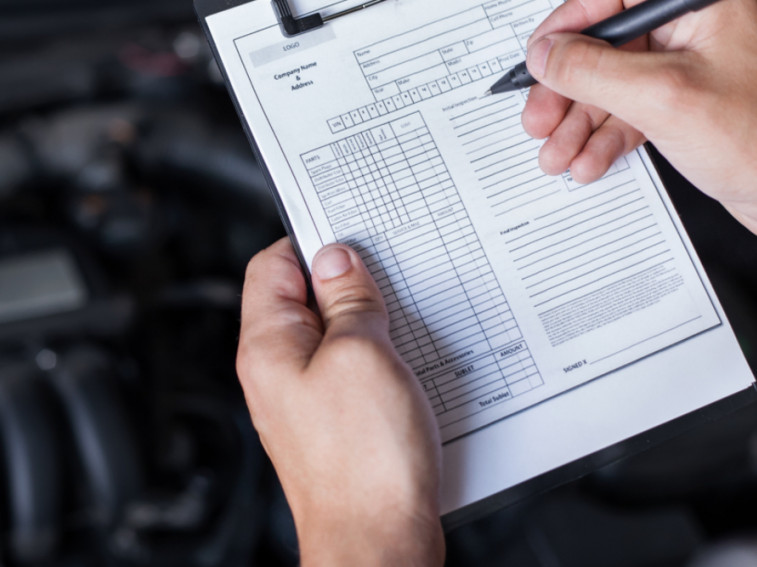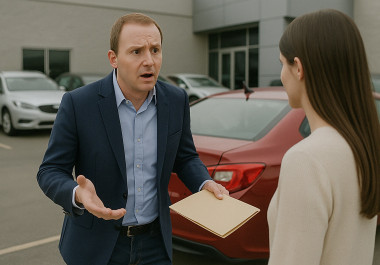If you’re buying a salvage car from one of our online vehicle auctions because you’re looking to fix it up and sell it on, a physical inspection may not be that important to you. However, if you’re buying a used, seized or salvage vehicle with the intention of getting it roadworthy again, a physical inspection is generally strongly recommended! It’s best to carry out these inspections in broad daylight, so that you can see the car clearly - and if you’ve not got a wealth of mechanical knowledge, bring a friend who knows what they’re doing. So once you arrive at the location, what then?
Giving the exterior the once-over
Bodywork
When it comes to used cars, some general wear and tear is to be expected, and the bodywork is usually the first place for this to manifest itself. That said, you’ll want to look out for any particularly serious dents or impacts, which may be indicators of some serious damage having been done under the surface. If the car has been involved in a high-speed collision, it’ll need to have undergone some serious repair work before it’s roadworthy again - so trust your instinct!
Also, look out for any gaps between the panels, as this is sometimes a sign that it’s been badly repaired after a crash. While you’re examining them, it’s also worth keeping an eye out for any differences in colours between the panels, too. This is a possible indication that the salvage car is a dangerous ‘cut and shut’ - in other words, one that’s been hastily and unsafely repaired before being sent illegally back out on the roads.
Glass
As you’re looking around the salvage car, make sure to take a good look at the windscreen as well; it should be completely free of any chips or cracks. As any technician will tell you, even small chips can severely damage the overall integrity of the windscreen, leading to the possibility of it shattering as you’re driving. If the cracks are in your eyeline, they could be an MOT failure too. Once you’ve finished examining the front and rear windows, take a look at the headlights and rear lights too, and ensure that they’re intact and working to the degree they’re supposed to be.
Tyres
You’re probably familiar with the well-worn concept of kicking the tyres, but it’s worth taking a second to wonder; what does that actually tell you about the vehicle? It’s far more productive to get down there and inspect them properly, especially for their tread depth. They need to be 1.6mm as a legal minimum, so if they’re below 3mm, you may have to factor in the cost of changing them in the very near future. Speaking of which, you also might want to take a quick look at the spare wheel and accessories too - to make sure that they’re all in appropriate condition to use should the worst happen! Also, give all the wheels the once-over for physical damage. For example, are there any signs of kerbing on the wheels?
Don’t forget the details
Fluids
This is where your mechanically-inclined friend may come in especially handy, if you’re lucky enough to have brought one. Crack open the bonnet and take a look at the levels of oil, brake fluid and power steering fluid. All need to be of a sufficient level if you plan to drive the car anytime soon. If they’re empty - having been advertised as being filled - it’s possible that there are leaks somewhere in the car, which can be labour-intensive to find and fix. For that reason, it’s not a bad idea to check around the car for any puddles or patches of damp that may have formed underneath it, especially if it’s been parked in its current position for some time.

Electrics
One of the appeals of salvage cars for many people is that the electronics are far simpler to operate than the more advanced systems in many high-end vehicles today. While those sophisticated in-built systems might require extensive testing to make sure they’re up to scratch, testing the electronics on a salvage car may simply involve winding the windows up and down, checking that the radio is working, testing the air conditioning, and that the headlights and rear lights are illuminating correctly.
Upholstery
Make sure to give the upholstery a detailed inspection, too. After all, you and your family will be making physical contact with it every single time you use the car, so you need to ensure it’s up to your personal standards! Like the bodywork, it’ll probably have been subjected to a considerable amount of wear and tear over the years, and most salvage car owners are therefore happy with a few tears in the leather and that sort of thing. The stuff to watch out for, though, includes unexplained stains and smells, especially if they seem unhygienic. For non-smokers, the smell of smoke can be highly unpleasant, and also extremely difficult to shift, so it’s something to keep an eye out for early!
Some owners have different standards for their salvage cars, so there may be additional factors you want to check for your own peace of mind. Generally, though, this is the bare minimum! Once you’re happy with everything on the list, you can start considering the next step of buying your next salvage car.
In fact, you can take the first step of that journey right here at RAW2K! We’re the UK’s number one site for used, seized and salvage cars, and we’ve got a huge range of vehicles in stock from the likes of Renault, Vauxhall, and Honda - just to name a few! Why not take a look around, and see what you can find?




